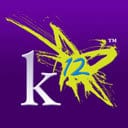K12 Report Shows Growth, Calls for Better Measures

Thirteen years ago, when his daughter was six, Ron Packard was a dad searching the Internet for math lessons. He started what became the world’s largest online learning provider, a public company with annual revenues close to $1 billion serving 110,000 full time students in 33 states.
“We are changing peoples lives and creating options where no options existed,” said Packard at a meeting this week where the company shared an Academic Report with investors and reporters. Given the pummeling by critics and the puzzling by policy makers, the company appointed a COO, Tim Murray, a CAO, Margie Jorgensen and adopted a more open stance to discussing academic challenges.
The report summarizes the promise of “Providing customized learning experiences, differentiated according to individual needs, not to a few but at scale.” Packard added specific advantages of online learning:
- Individualized within a course: self-paced, adaptive 24/7/365;
- Individualized learning pathways: make all courses more interesting;
- Engaging: making courses more interesting and providing great teacher for everyone;
- Cost efficient: K12 delivers quality education for about 60% of the average national expenditure; and
- Flexibility: the ability to learn anytime anywhere.
At the meeting I met an eighth grader taking geometry (a 10th grade course) and a fourth grade gymnast. Both were from military families that had moved three times in the last two years. Both appreciated the continuity in their education in K12 supported schools.
Six Observations. The report makes six important points:
- Online schools are managed by nonprofit charter school boards that often contract with vendors like K12 to provide curriculum and instruction. They are “the most ‘public’ of public schools, open to every child based on choice, not geographic, location or economic means.”
- As online learning goes mainstream, there is a “growing population of academically at-risk students, students with special needs, high mobility rates, and the complexities of measuring academic progress under these conditions.” K12 estimates that 50-70% of students entering their schools did not achieve proficiency in math on state exams they took in the year before enrolling, about 40% in reading. (Yeah, I know you’re saying welcome to the real world.)
- Here’s the catch: about half of the students taking state tests are in their first year in a K12 supported program and more than 70% of K12 students have been enrolled with the program for two years. As a result, their scores often reflect their previous educational experience more than their brief time in a K12 program.
- What is really important is growth, are students making more than one year of progress each year? K12 thinks there are big limitations to current tests used to estimate growth. They think adaptive tests (like Scantron or MAP from NWEA) provide more accurate measures. Using adaptive tests, K12 observed 2011-12 student growth of about one year of progress in math and two years in reading. That’s good progress and probably more rapid than in previous settings.
- K12 is spending a lot ($330 million to date) to drive improvement and innovation in online and blended learning. Curriculum innovations include games and other interactive media, projects, virtual science labs, and AP test prep.
The new population fleeing to online learning is high poverty, high mobility, over-aged and under-credited students. The report illustrates how a student two years behind and earning credits at 1.5 times the normal rate (which may be 2-3 times faster than the previous environment) will still take four years to catch up. It’s a reminder that we need more fine-grained metrics before declaring programs successes or failures.
All K12 students have an Individualized Learning Plan (ILP) based on each student’s background, previous education, abilities, and aspirations. K12 serves more than 10,000 special needs students signaling the “growing acceptance of the ability of online schools to meet the needs of students with disabilities.”
Margie Jorgensen, new CAO, is sifting through mountains of data and drawing upon her 30 years of experience as an assessment exec and advisor. She’ll be working with EVP Maria Szalay on new products and strategies to boost achievement.
One intervention featured at the meeting was National Math Lab (NML), a double block of math for struggling students in grades 5-10 introduced in August 2011. In addition to regular coursework, NML students receive online tutoring four days per week.
The Getting Smart team talks a lot about The Shift From Cohorts to Competency, while some online math students enjoy being part of a group. Ohio Virtual Academy introduced a “Cohort Academy” for late enrolling students who had struggled in math.
Agora Cyber Charter School boosted retention with home visits and intervention from a Family Teacher Coach when necessary.
Szalay’s team works closely with school teams to create pilot programs and test new concepts. Those that are successful turn into Model Schools Initiative and are rolled out across the network.
The report is an important step toward improved transparency from K12. The report illuminates important policy issues, particularly around measurement of student growth. The report is an important step toward improved access to quality at scale.
K12 is a Getting Smart Advocacy Partner.





0 Comments
Leave a Comment
Your email address will not be published. All fields are required.